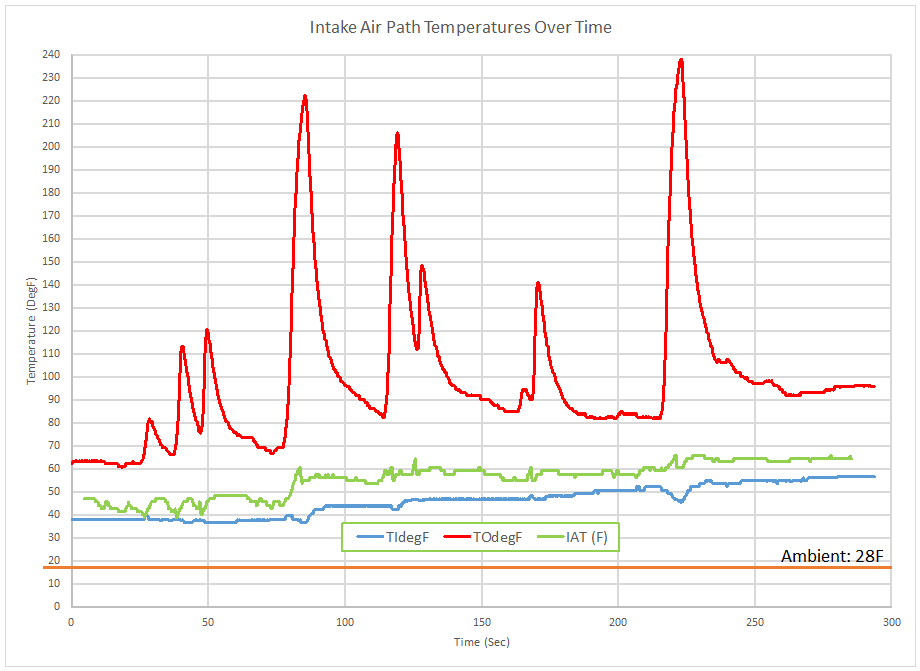Currently I have air temperature sensors located at various points along my S4’s intake path to monitor the air temperature under various driving conditions.
There is one sensor located in the intake pipe leading into the turbocharger compressor, approximately 10 inches before the inlet.
Another sensor is located in the hard pipe at the turbocharger compressor outlet but before the air to air intercooler.
I have access to temperature data from the vehicle intake air temperature sensor which is located at the entrance to the intake manifold.
A fourth air temperature sensor is the vehicle outside air temperature sensor located in front of the radiator.
Driving while logging these locations provides some idea of how the different components affects the temperature of the intake air as it travels along it’s path to the engine.
Shown below is a chart of these temperatures over several minutes of driving under changing conditions.
As documented on the chart, the orange line was the atmospheric temperature at the time of this drive, a cold 28 degrees Fahrenheit.
The blue line shows the temperature of that air after passing through the intake snorkel, airbox/filter, MAF housing, accordion, Y-pipe, and upper turbo inlet piping.
Note: This log was made after driving for a short while, prior to which the vehicle was parked inside a garage where the air temperature was around 50 degF.
The red line shows the next stop on the air’s journey to the engine, after it has passed through the turbocharger compressor. The large upward spikes indicate when the turbochargers were producing boost, around 22 psi in the case of the larger spikes.
Last, the green line shows the temperature after the air has passed through the intercooler and is entering the intake manifold.
Observations:
One of the most obvious take-aways from this chart is how substantially the turbochargers heat the intake air when producing boost, even at relatively modest levels for a stage 3 setup.
Another significant point is how well the intercoolers work at bringing that temperature back down so what is fed to the engine is relatively cool. During this drive I was using the Silly Rabbit Motorsport B5 S4 SMIC’s.
Something this chart does not answer, but may provide some perspective about, is the significance of additional methods at heat management. For example, thermal wraps, reflective barriers, cold air intakes, etc. If the turbocharger is raising the temperature of the air up to 200 degF above the temperature it enters the compressor at, and then the intercooler pulls that air temperature back down by about 190 degF, is wrapping the entire intake path going to make much difference in the outcome?

